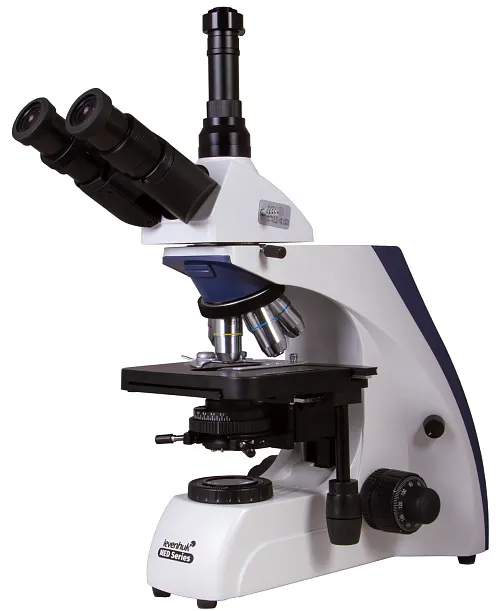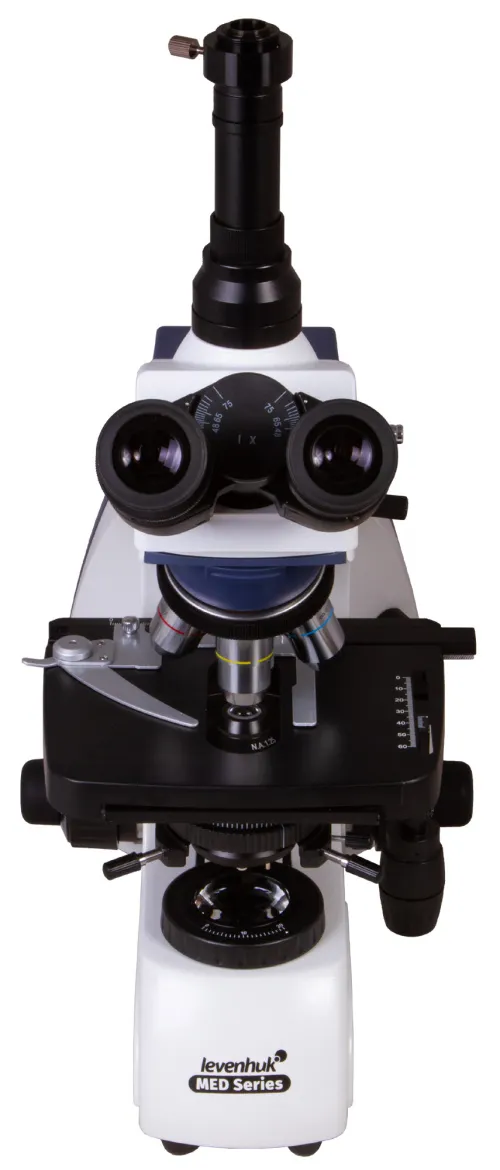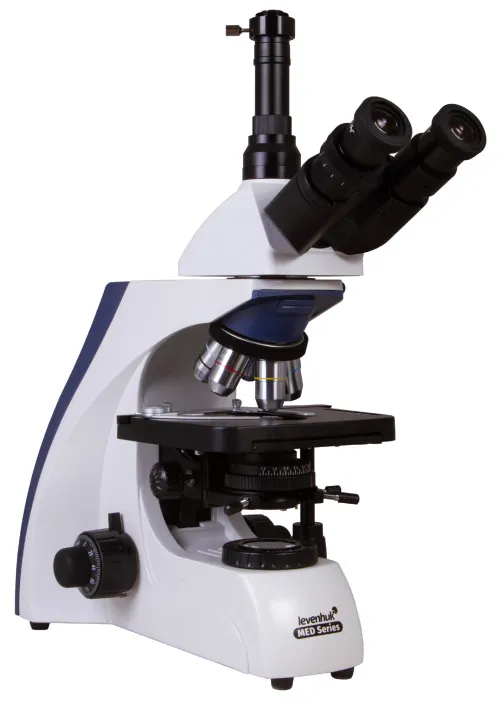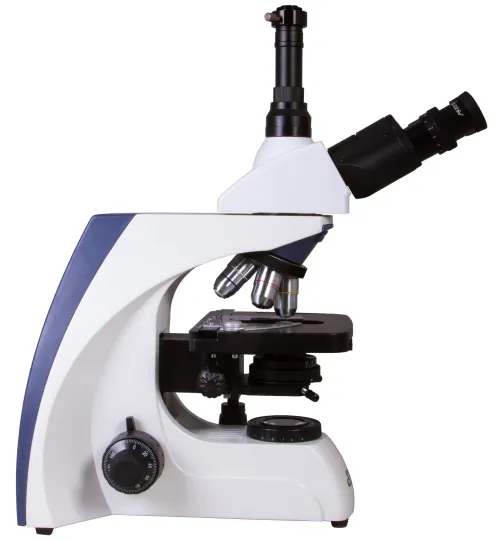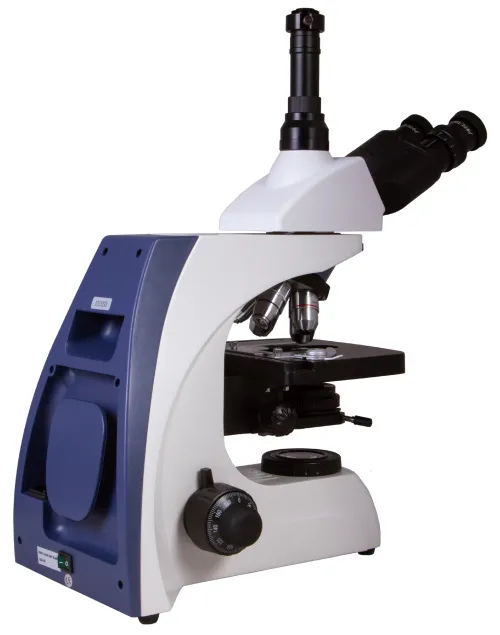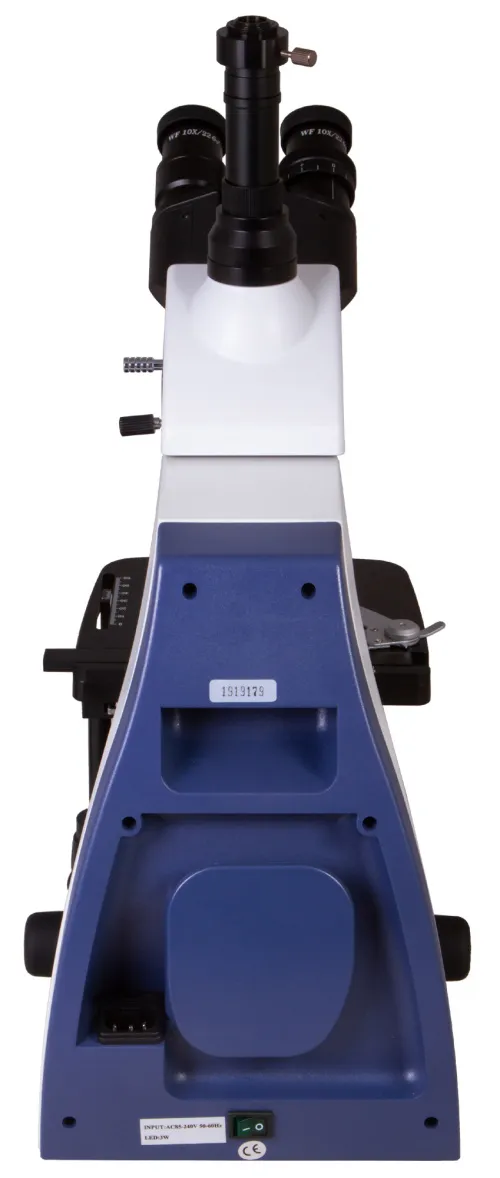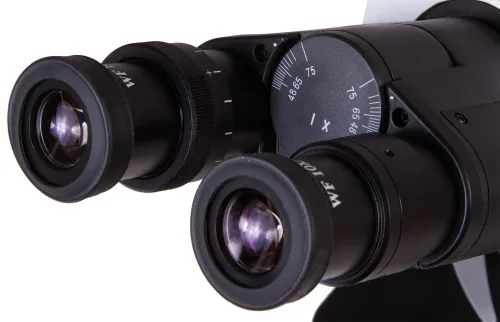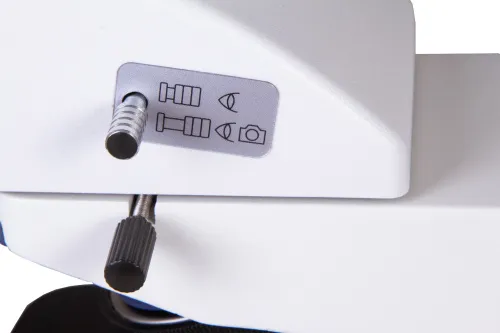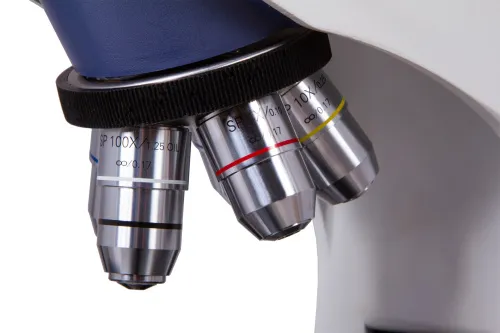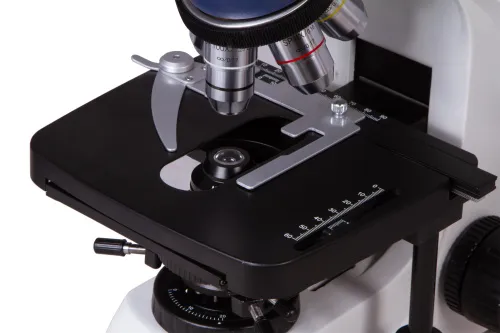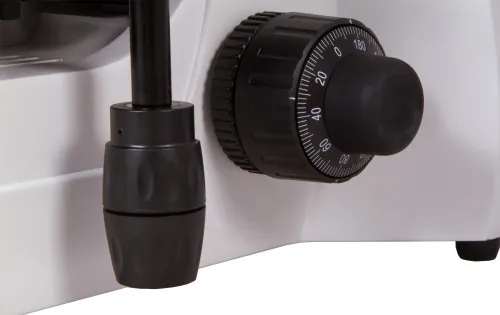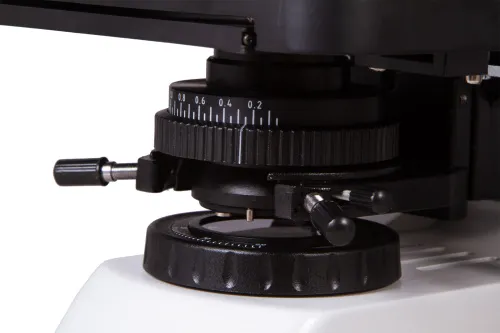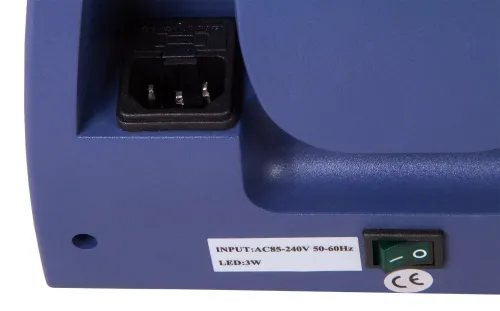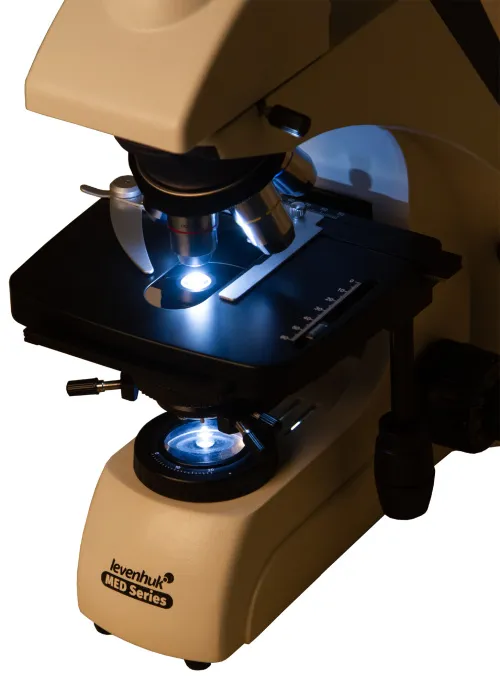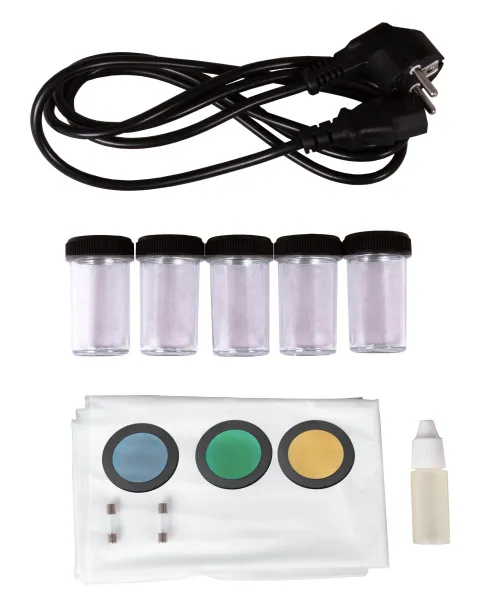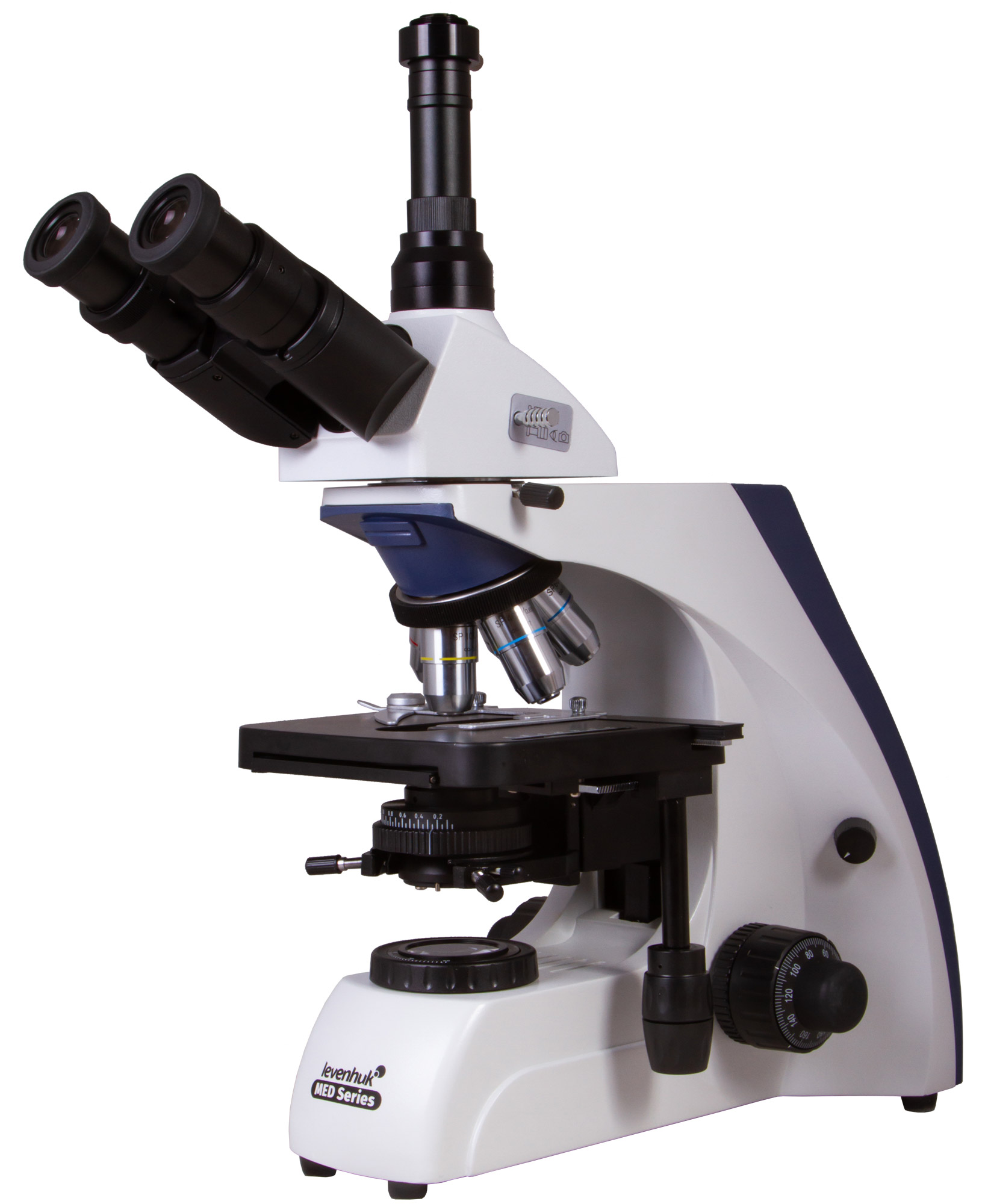Levenhuk MED 30T Trinocular Microscope
Magnification: 40–1000x. Trinocular head, infinity-corrected semi-plan achromatic objective lenses, an Abbe condenser with an iris diaphragm
| Product ID | 73997 |
| Brand | Levenhuk, Inc., USA |
| Warranty | lifetime |
| EAN | 5905555004990 |
| Package size (LxWxH) | 62x35x28 cm |
| Shipping Weight | 10.4 kg |
Levenhuk MED 30 is a trinocular microscope in a professional series Levenhuk MED. The microscope uses infinity-corrected semi-plan achromatic optics, which allow for installing additional accessories (purchased separately) to extend the capabilities of the microscope. This microscope is excellent for a specialist in a clinical and diagnostics laboratory, research institute, or a university department. This microscope allows for working with small structures and conducting sophisticated microbiological research.
Semi-plan achromatic infinity-corrected optics
The microscopes in the Levenhuk MED 30 series are equipped with an infinity-corrected optical system that is used in professional and high-class microscopes. This system includes Infinity SemiPlan objectives and allows for obtaining clear, high contrast images with high level of flatness.
One of the most important features of an infinity-corrected optical system is that it allows for installing any additional parts in the optical path between objective lenses and an ocular tube. The additional parts include polarizers (all Levenhuk MED 30 Microscopes feature a special slot for installing them) and epi-fluorescence light. All in all, modular design and simple operation make Levenhuk MED 30 optimal microscopes for using in different kinds of microscopy and working in hematological, histological, microbiological, and other laboratories.
A rotatable head with a beam splitter
A trinocular head consists of an ocular tube for installing a digital camera (not included), and a binocular head for visual observations. A 30° inclination angle is convenient for lengthy work, and a 360° rotatable head allows for the effective use of the microscope for group work. There is a beam splitter.
Capabilities of the optical system
Wide-field eyepieces allow for adjusting diopters to customers' eyesight. The eyepieces provide 10x magnification. There are five objective lenses included; the ones with the highest magnification are equipped with spring-loaded frames to protect the optics from accidental damage. A 100x objective lens is used for conducting observations using oil immersion. All objective lenses are semi-plan achromatic and they enhance color rendering, eliminate optical aberrations, and significantly flatten a field of view. The optics of the accessories are protected with an anti-fungal coating. Sharpness is adjusted with the coarse and fine focusing adjustment knobs.
Working with microscope slides in LED lighting
The stage is equipped with a mechanical scale. It eases placing a specimen under an objective lens. Under a stage, there is an Abbe condenser with an iris diaphragm. Three included light filters enhance an image contrast and allow for discerning tiny details of the specimens at high magnification. A 3W LED is used for lighting specimens. It is located under a condenser and features adjustable brightness. LED light has a lens that enhances brightness. Setting up Köhler illumination is available. The light is powered by an AC power supply.
Features:
- Trinocular head with a beam splitter, magnification range of 40x to 1000x
- Infinity-corrected semi-plan achromatic optics
- The eyepieces and objective lenses have an anti-fungal coating
- Enhanced LED light with brightness adjustment
- Köhler illumination is available
- Powered by an AC power supply
The kit includes:
- Microscope base with a stand
- 360° rotatable trinocular head
- Infinity-corrected semi-plan achromatic objective lenses: 4x, 10x, 40xs, 60xs, 100xs (oil) with an anti-fungal coating
- Wide-field eyepieces: WF10x/22mm with an anti-fungal coating (2 pcs)
- Abbe condenser N.A. 1.25 with an iris diaphragm
- Filters: blue, green, yellow
- Bottle of immersion oil
- Fuse (2 pcs)
- Power cord for microscope
- Dust cover
- Camera mount
- User manual and lifetime warranty
Caution:
Please refer to the specifications table for the correct mains voltage and never attempt to plug a 110V device into 220V outlet and vice versa without using a converter. Remember that mains voltage in the U.S. and Canada is 110V and 220–240V in most European countries.
Some things you can see under a microscope:





Levenhuk MED 30T Trinocular Microscope is also compatible with other Levenhuk digital cameras (additional cameras are purchased separately). Levenhuk cameras are installed in the eyepiece tube instead of an eyepiece. This microscope is also compatible with any other digital microscope cameras.
| Product ID | 73997 |
| Brand | Levenhuk, Inc., USA |
| Warranty | lifetime |
| EAN | 5905555004990 |
| Package size (LxWxH) | 62x35x28 cm |
| Shipping Weight | 10.4 kg |
| Type | biological, light/optical |
| Microscope head type | trinocular |
| Optics material | optical glass with anti-fungal coating |
| Head | 360 ° rotatable, with switching (dividing) luminous flux |
| Head inclination angle | 30 ° |
| Magnification, x | 40 — 1000 |
| Eyepiece tube diameter, mm | 23.2 mm (third vertical tube), 30mm (binocular head) |
| Eyepieces | WF10x/22mm (2 pcs.) |
| Objectives | infinity-corrected semi-plan achromatic objective lenses: 4x, 10x, 40xs, 60xs, 100xs (oil) |
| Revolving nosepiece | for 5 objectives |
| Interpupillary distance, mm | 48 — 75 |
| Stage, mm | 180x160 |
| Stage moving range, mm | 80/50 (movement in horizontal (X and Y) directions) |
| Coarse focusing travel, mm | 20 |
| Stage features | mechanical double-layer |
| Eyepiece diopter adjustment, diopters | ±5 |
| Condenser | Abbe N. A. 1.25 with an iris diaphragm |
| Diaphragm | iris |
| Focus | coaxial, coarse (0.5 mm) and fine (0.002 mm), with rack and pinion |
| Body | metal |
| Illumination | LED |
| Brightness adjustment | ✓ |
| Power supply | 100–240V |
| Light source type | 3W, with an extra lens |
| Light filters | blue, green, yellow |
| Additional | Köhler illumination, collector lens |
| User level | experienced users, professionals |
| Assembly and installation difficulty level | complicated |
| Application | laboratory/medical |
| Illumination location | lower |
| Research method | bright field |
| Pouch/case/bag in set | dust cover |
We have gathered answers to the most frequently asked questions to help you sort things out
Find out why studying eyes under a microscope is entertaining; how insects’ and arachnids’ eyes differ and what the best way is to observe such an interesting specimen
Read this review to learn how to observe human hair, what different hair looks like under a microscope and what magnification is required for observations
Learn what a numerical aperture is and how to choose a suitable objective lens for your microscope here
Learn what a spider looks like under microscope, when the best time is to take photos of it, how to study it properly at magnification and more interesting facts about observing insects and arachnids
This review for beginner explorers of the micro world introduces you to the optical, illuminating and mechanical parts of a microscope and their functions
Short article about Paramecium caudatum - a microorganism that is interesting to observe through any microscope

